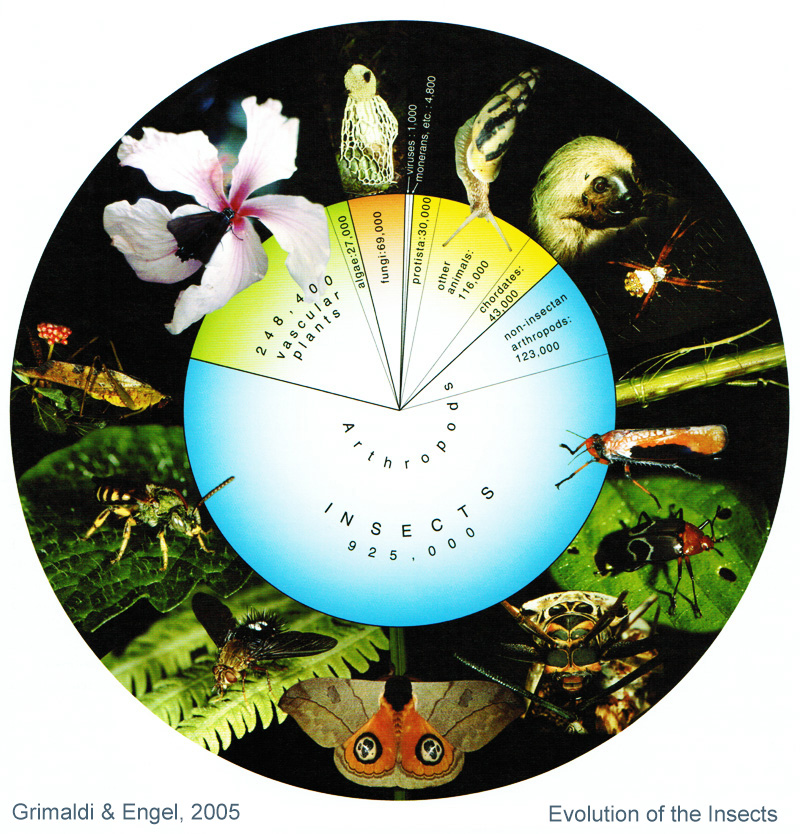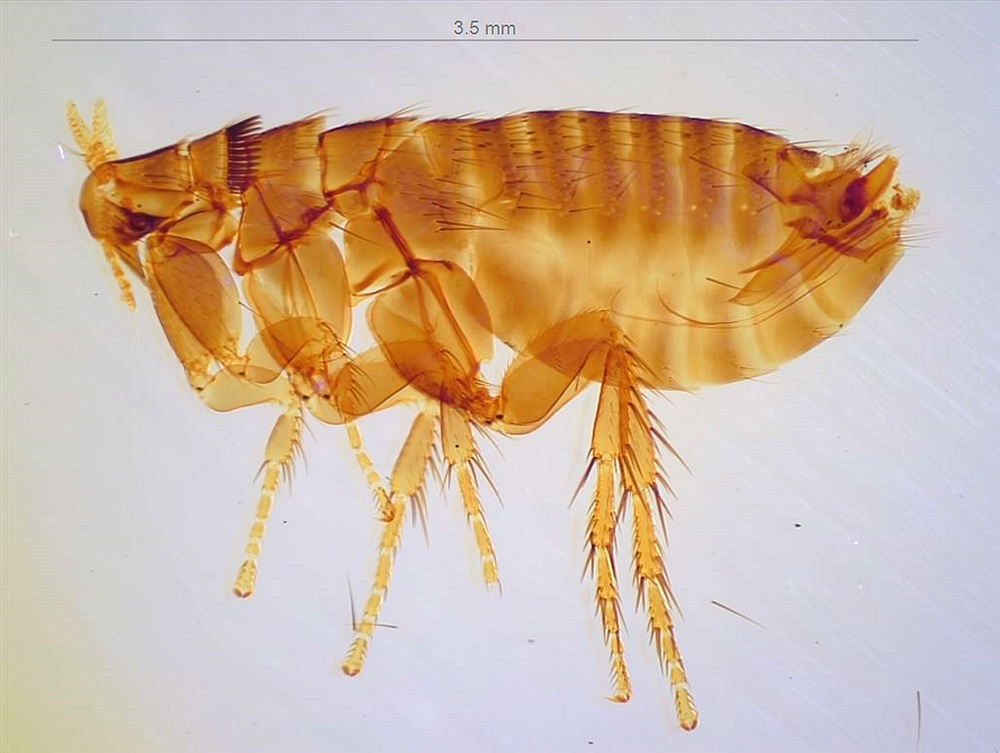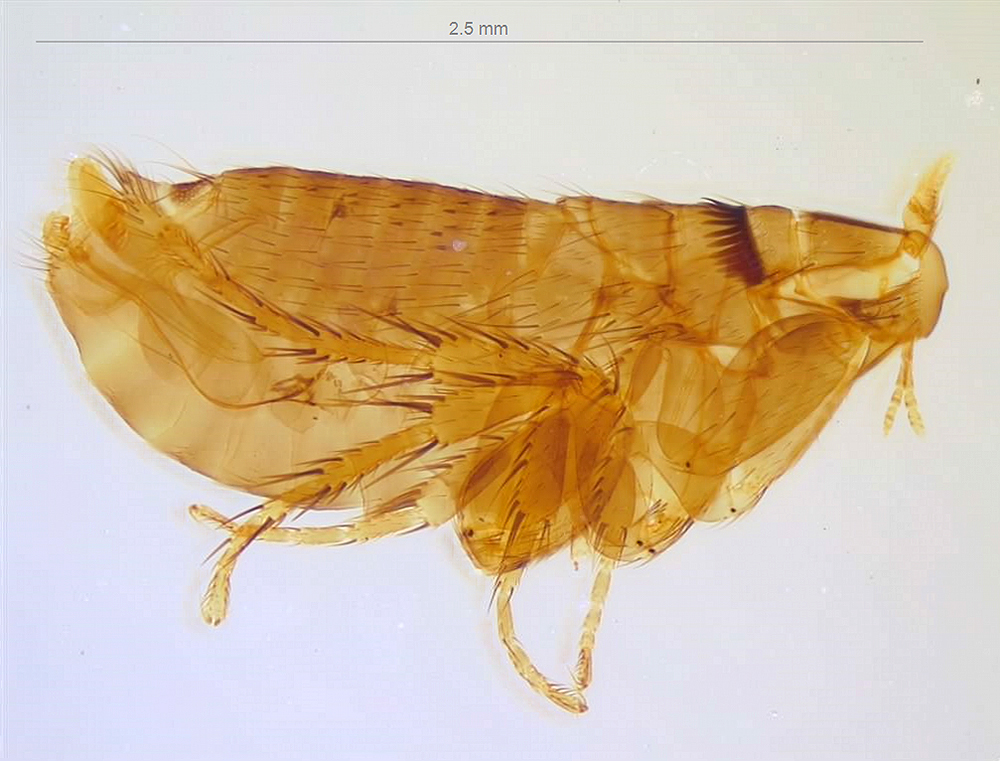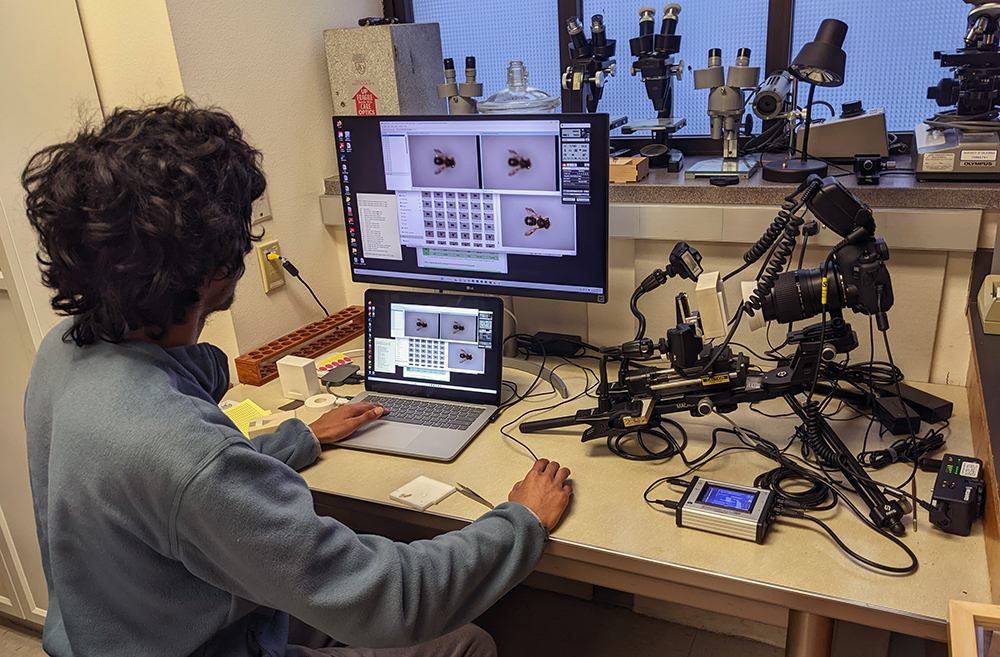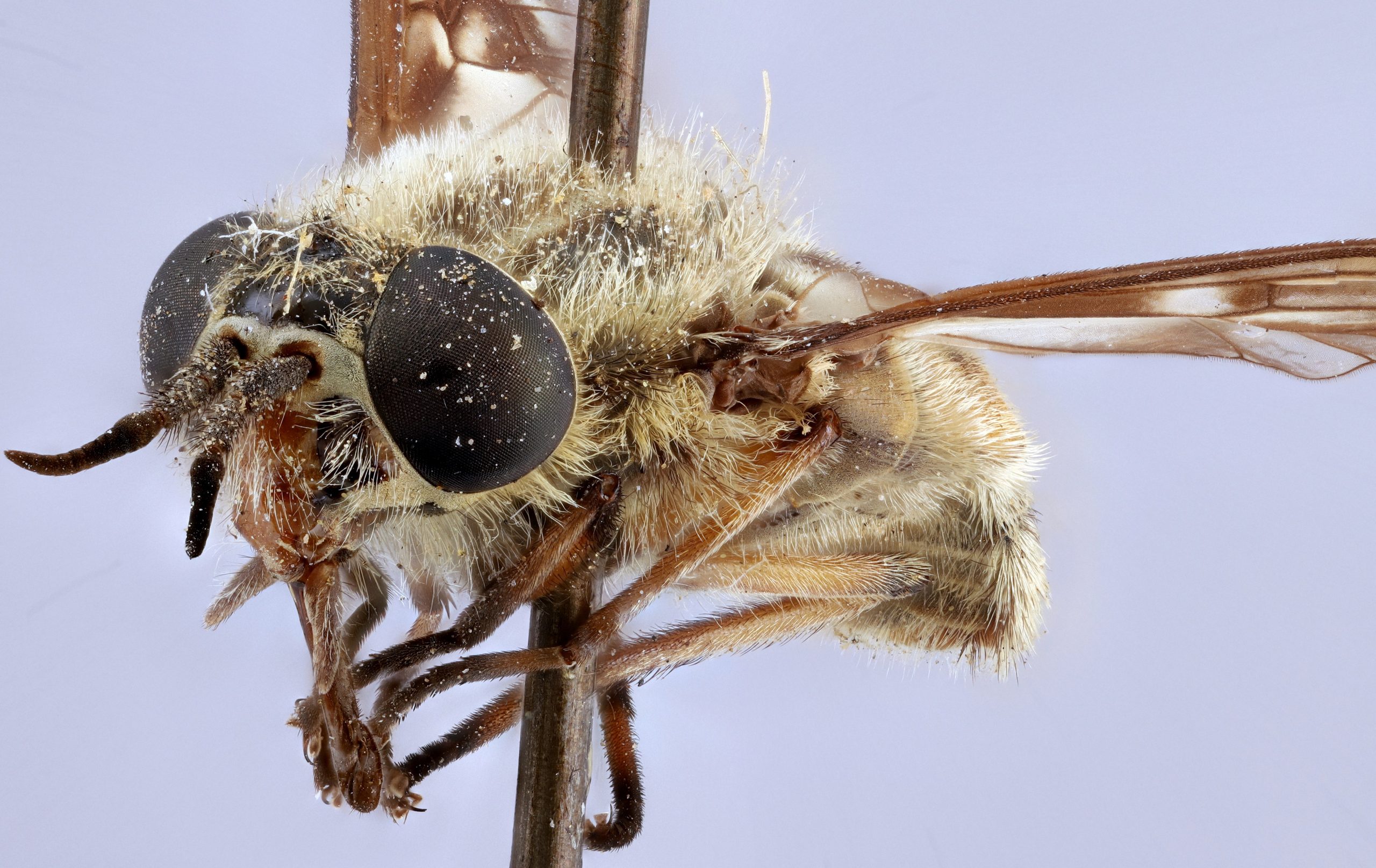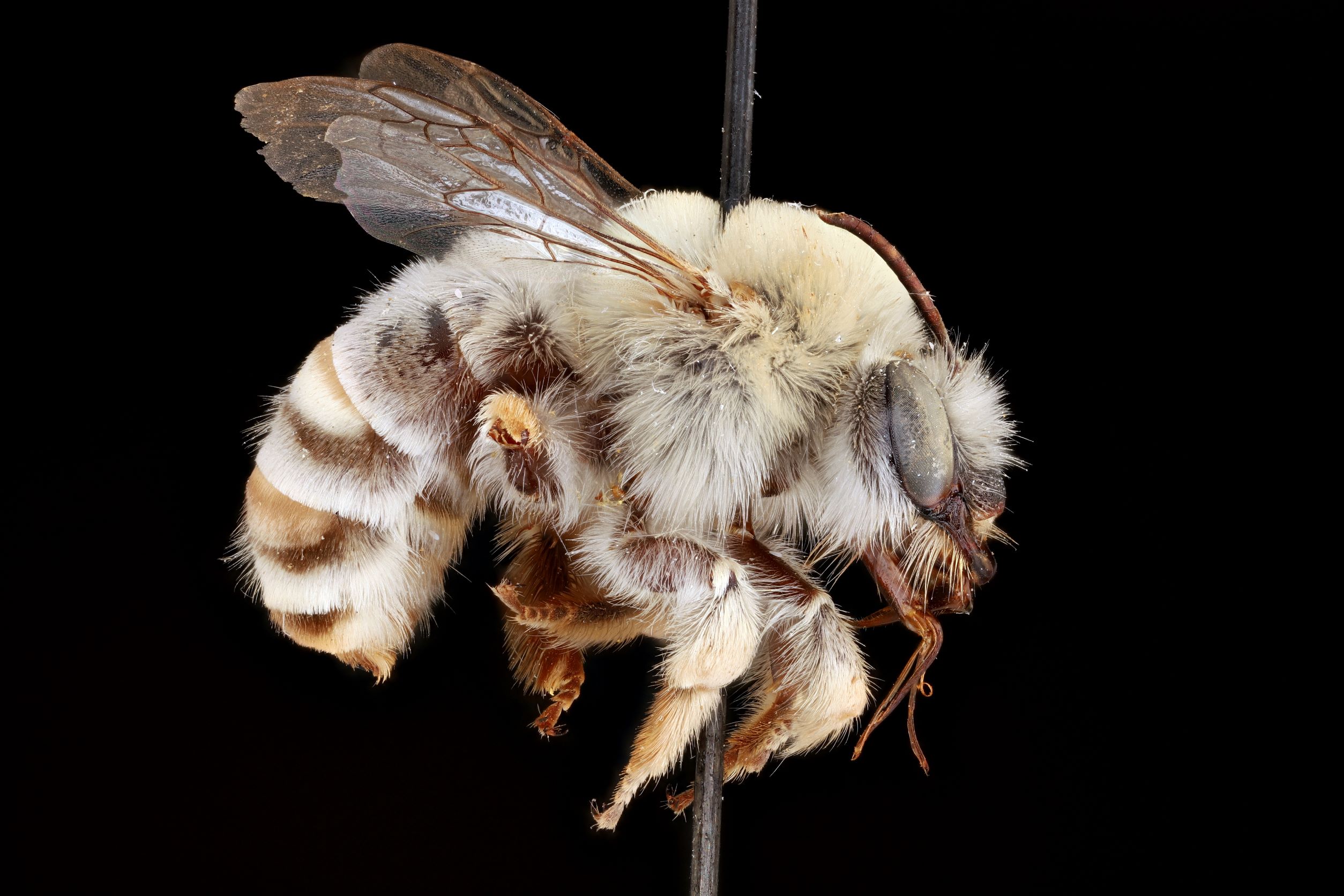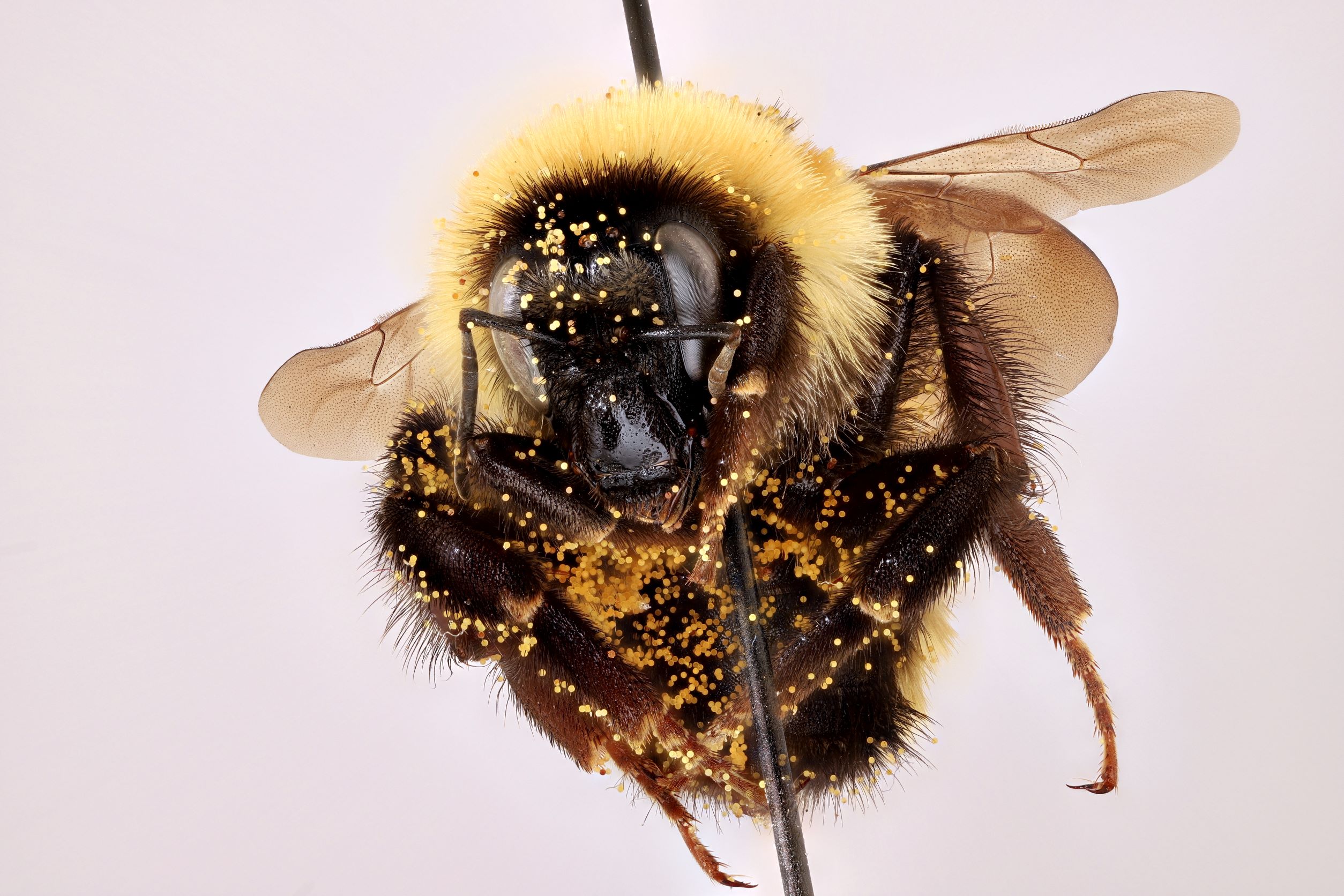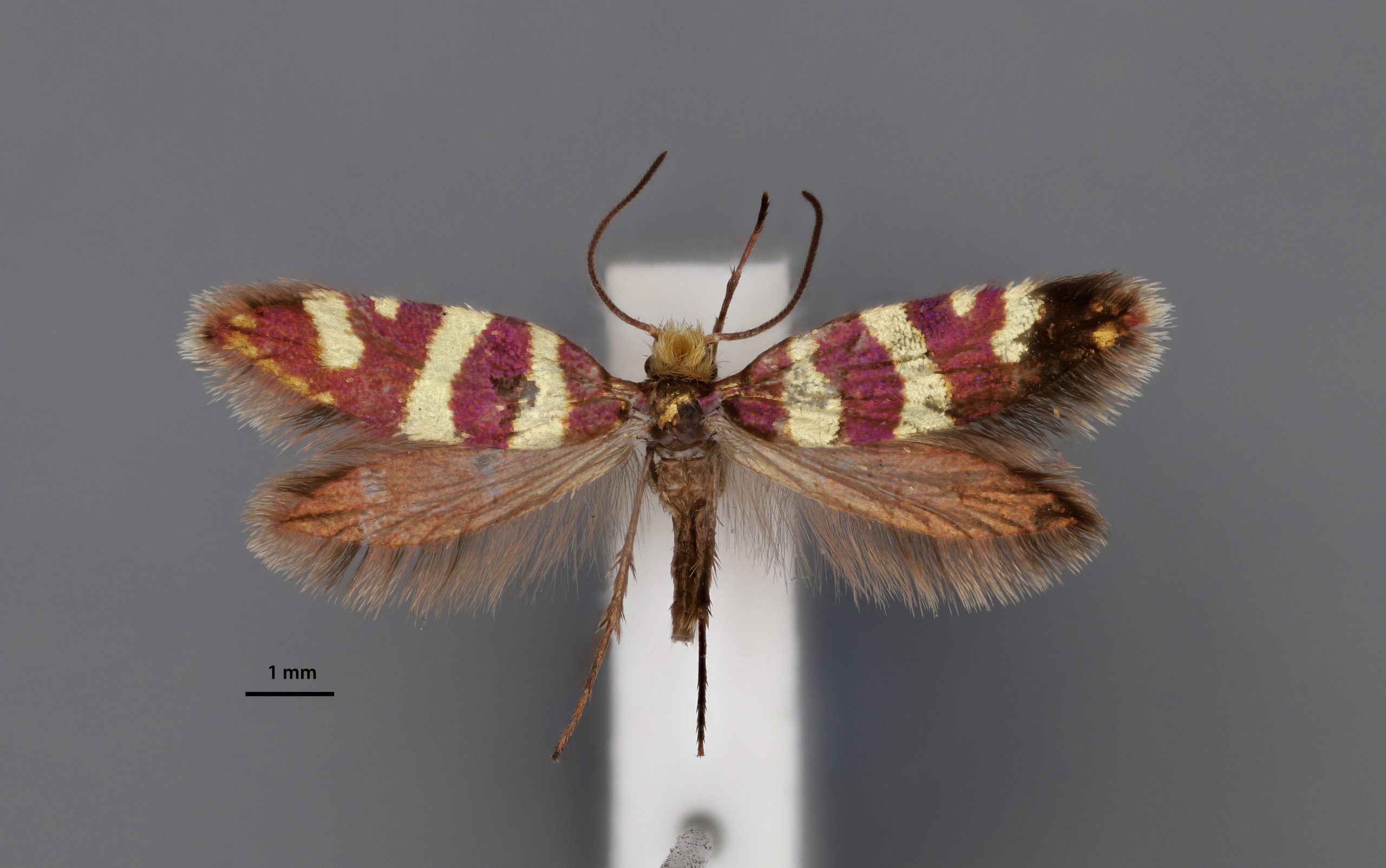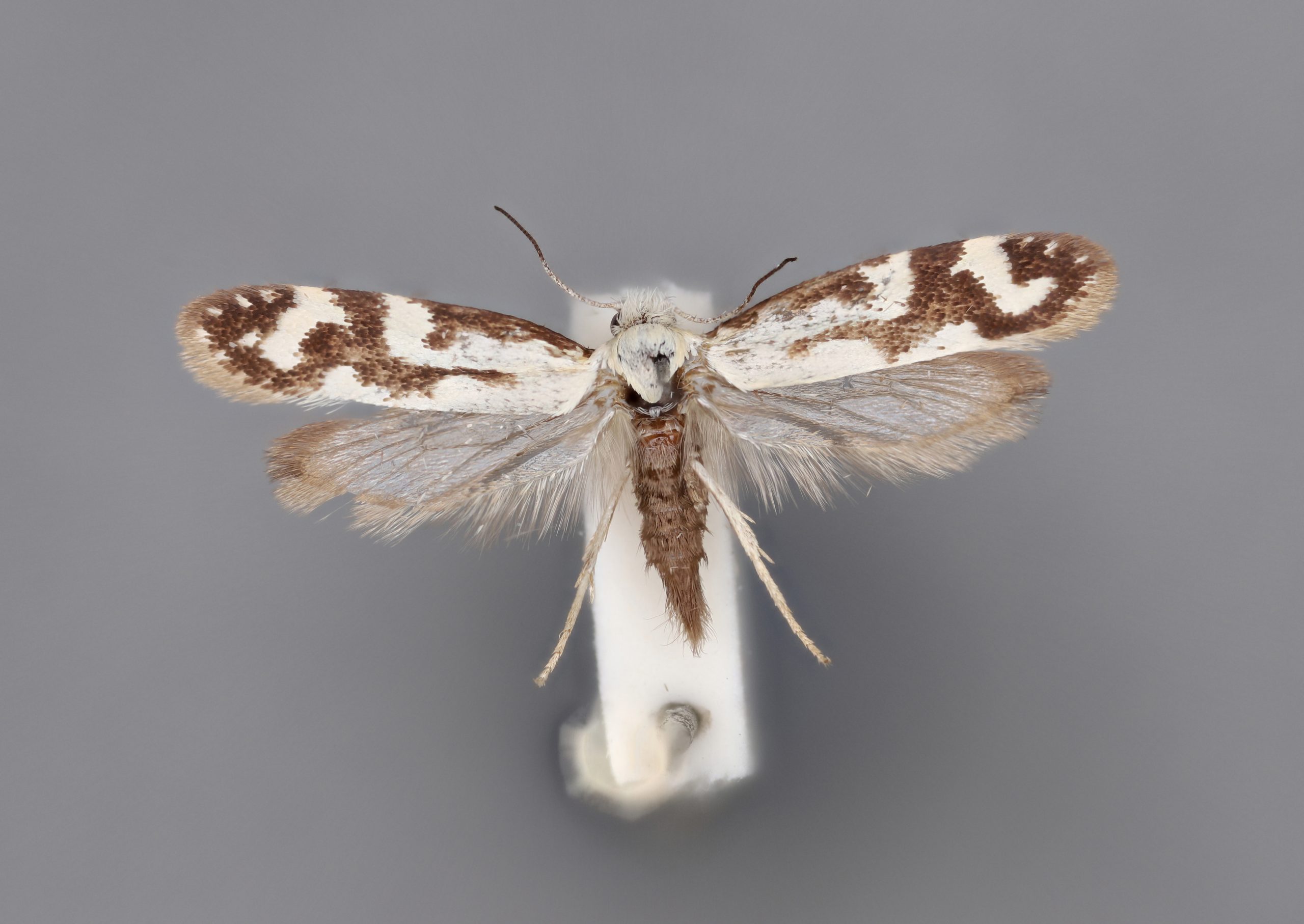Most insects are very small and cryptic, often escaping notice by the casual observer. Yet these tiny animals make up the bulk of biological diversity on the planet, pollinating our crops and native plants, decomposing organic matter, occupying key nodes in food webs, and acting as weather vanes of climate and land use changes, as well as vectoring diseases and reducing crop and orchard yields.
High resolution, focus-stacked imaging allows us to see not only the tiniest of insects, but also the minute features of larger insects. The Essig Museum of Entomology uses several different imaging system to photograph specimens. We use a Leica S9i digital microscope with Leica Application Suite software (purchased with funds generously donated by Vince & Cheryl Resh) for both specimen imaging, such as the flea slide example below, as well as giving digital tours of the museum via Zoom.
The Essig Museum also uses a MacroPod camera system (Macroscopic Solutions), purchased as part of our collaborative Big Bee grant from NSF to digitize the museum’s extensive bee collection. Using a programmable focus rail, indirect lighting, and Zerene stacker software we are taking hi-res, deep focus photographs of representatives of each species of bee and moth in the Essig collection. These photographs also provide training sets to autamated insect identification systems liked those used in iNaturalist and Google Lens.

